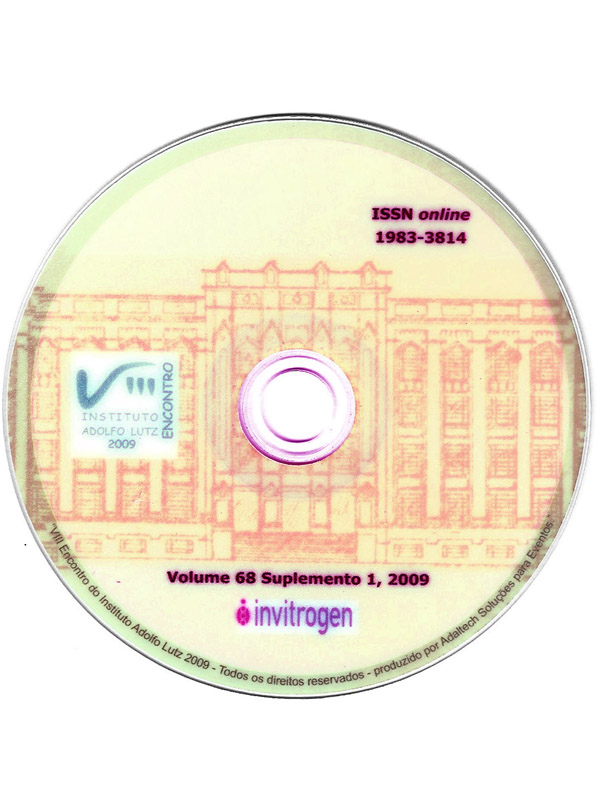Resumo
Identification of appropriate laboratory measurements for confirmation of a clinical impression is important in a routine paracoccidioidomycosis patients’ medical care and constituted the objective of this study. Clinical records and laboratory cards of 401 paracoccidioidomycosis patients attended in the Tropical Diseases Area – Botucatu Medical School (São Paulo, Brazil) during the 1974-2008 were reviewed. Direct mycological examination (DME), cell block preparation (CBP), histopathological examination (HE), and specific antibodies serum levels - double agar gel immunodiffusion test - were evaluated before treatment. Males (88.0%) and chronic form (76.8%) predominated. Patients distribution according to period of attendance presented no differences. Identification of typical P. brasiliensis yeast forms in clinical specimens was observed in 86% of the patients while 14% of them showed only a positive serological test. Direct mycological carried out in 51 different tissue specimens showed 74.5% of sensitivity; 62.5% of sensitivity was observed in 112 sputum samples. Cell block preparation carried out in 483 sputum samples showed 55.3% of sensitivity. Histopathological examination carried out in 239 tissues from different organs revealed 96.7% of sensitivity. Serological tests carried out in 351 patients and 200 healthy controls paired according to gender showed 90% of sensitivity, 100% of specificity, 100% of positive predictive value, 85% of negative predictive value and 94% of accuracy. Comparisons 2x2 of laboratory measurements carried out in the same patient showed that sensitivity decreases from HE to serology to CBP and DME; the last two assays showed no differences in sensitivity. This study revealed that P. brasiliensis can be identified in almost all the cases, mainly by HE, and the value of serological tests in a routine Service, including during long periods, with exchange of technicians, biologists
and pathologists.

Este trabalho está licenciado sob uma licença Creative Commons Attribution 4.0 International License.
Copyright (c) 2009 TC Moreto, MEA Marques, MLSC Oliveira, DV Moris, LR Carvalho, RP Mendes
